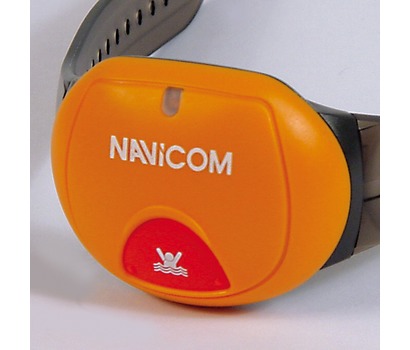Why the Navicom RT-650? Well, it's not just an MMSI compatible marine band transceiver, but also includes two extra 'goodies' - an inbuilt AIS receiver and an MOB bracelet so that when someone is on watch alone, particularly at night, then the watch-keeper wears the bracelet and if they fall overboard then the entire crew is woken up and alerted. Sounds like a simple job, be done by lunchtime...
The first problem was that when we connected the new radio it didn't work. Part of the problem with the old one turned out to be dodgy wiring from the previous owner. He had just twisted wires together and taped them up mid-way along a cable run. Salt water had got into the joint and corroded the wire badly. This horrid twisted joint was hidden behind a waste water pipe so not visible! Tracing and finding the fault took some time and then replacing the old wire with a new cable through a rather tortuous route took longer still.
Next problem was to get the radio to receive GPS signals and send AIS signals. Also easier said than done. The manual, though in English, is somewhat spartan and didn't explain that the GPS input is locked to 4,800 baud whereas the AIS output is switchable and defaults to the normal 38,400 baud. However, the Raymarine C series chart-plotter will either do 4,800 baud or 38,400 baud not a combined send at 4,800 baud and receive at 38,400 baud to be compatible with the Navicom.
Eventually I downgraded the output of the Navicom to 4,800 baud to match the Raymarine, but this is not a good solution as the higher traffic of AIS means it is possible some data will get lost.
Next problem was that the MOB bracelet didn't work - turns out the battery needs charging. But it is a 5volt unit, not 12 volt so needs a separate charger.
The solution for the future may be to build a Seatalk to RS232 or RS422 converter, since Seatalk works at 4,800 baud, and use this to feed the GPS to the Navicom leaving the AIS data at 38,400. Seatalk is basically electrically very similar to RS232, but with 0 being 0 volts not minus volts. Because we only have positive voltages on the boat converting will be a little more difficult. Also, the data standard is not quite the same as NMEA so some translation necessary there too. Anyway... that's for another day... or another way.
We're hoping to sail to Beirut the week beginning the 13th November, so getting everything ready for the trip, and one of those things is having a decent working radio on board.



No comments:
Post a Comment